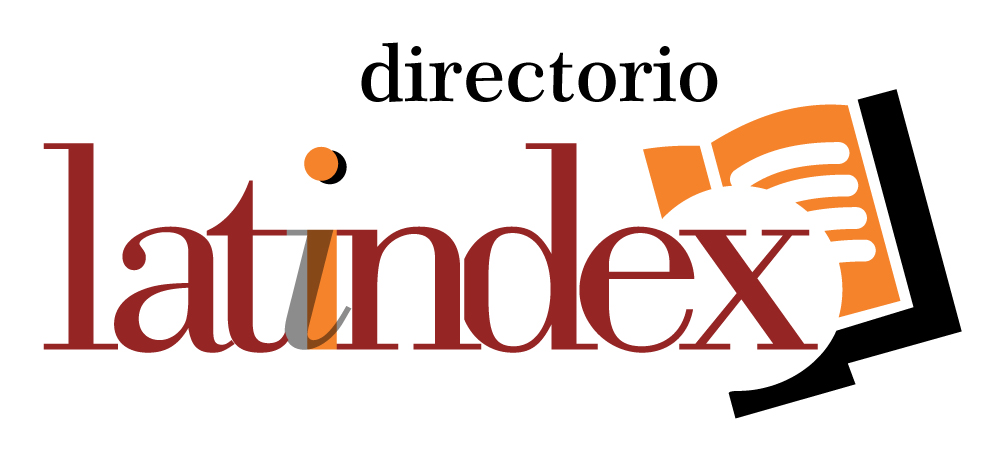Tratamento de resíduos sólidos orgânicos por vermicompostagem e os impactos ambientais ocasionados pela disposição inadequada desses resíduos em aterros sanitários: uma revisão da literatura
DOI:
https://doi.org/10.24221/jeap.10.1.2025.6326.001-011Palavras-chave:
Problemas ambientais, Minhocas, Biofertilizante, SustentabilidadeResumo
O gerenciamento de resíduos sólidos orgânicos é um tema de extrema relevância frente ao crescimento populacional, à industrialização e à urbanização em rápida ascensão. A disposição inadequada desses resíduos pode causar impactos ambientais como poluição do ar, solo e água, além de riscos para a saúde humana. Diante do exposto, a vermicompostagem consagra-se como uma opção sustentável e economicamente viável para solucionar este problema. Nesse contexto, o estudo objetivou investigar o cenário mundial do tratamento de resíduos sólidos orgânicos por vermicompostagem e os impactos ambientais ocasionados pela disposição inadequada desses resíduos em aterros sanitários. Para isso, foi realizada uma revisão sistemática da literatura, com busca de artigos no Portal de Periódicos CAPES e na base de dados PUBMED. Segundo os dados analisados, nota-se uma presença exorbitante de problemas quanto aos resíduos orgânicos, que em viés da sua composição química podem ser facilmente tratados a partir da ação das minhocas, como em casos de lodos industriais, ou até mesmo gerar biofertilizantes, um subproduto presente em 92,3% das pesquisas, reunindo ótimos resultados quanto à composição de macro e micronutrientes. Logo, os resultados obtidos demonstraram que a vermicompostagem consiste em uma maneira eficiente de manejar resíduos sólidos orgânicos, podendo ser aplicada para a produção de biofertilizante ou para tratamentos de estabilização desses resíduos a fim de reduzir seus potenciais nocivos. A presente revisão é fundamental para o incentivo da utilização da vermicompostagem como indicador de resposta ao despejo e tratamento incorreto dos resíduos orgânicos, consagrando-se como uma maneira de reutilizar e tratar esses resíduos sustentavelmente, atingindo resultados satisfatórios. Desse modo, a vermicompostagem consagra-se como uma forma promissora de mitigar a disposição incorreta de resíduos sólidos orgânicos e reduzir possíveis repercussões negativas ao meio ambiente.Downloads
Referências
Abdulla-Al-Mamun, M.; Hossain, N.; Hossain, M. I.; Sultana, R. 2023. Conversion of Leather Industry Solid Waste to Organic Fertilizer by Vermicomposting: Use for Plant Growth. Textile & Leather Review, 6, 37-56. https://doi.org/10.31881/TLR.2022.82
Aira, M.; Monroy, F.; Domínguez, J. 2007. Microbial Biomass Governs Enzyme Activity Decay during Aging of Worm-Worked Substrates through Vermicomposting. Journal of Environmental Quality, 36, (2), 448-452. https://doi.org/10.2134/jeq2006.0262
Aminifard, M. H. 2022. Effect of cow vermicompost on growth, fruit yield, and quality of hot pepper (Capsicum annuum var. Red chili). International Journal of Recycling of Organic Waste in Agriculture, 11, (3), 363-374. https://doi.org/10.30486/ijrowa.2021.1913049.1154
Bade, K. K.; Bhati, V.; Singh, V. B. 2017. Effect of Organic Manures and Biofertilizers on Growth, Yield and Quality of Chilli (Capsicum annum) cv. Pusa Jwala. International Journal of Current Microbiology and Applied Sciences, 6, (5), 2545-2552. https://doi.org/10.20546/ijcmas.2017.605.286
Bhat, S. A.; Singh, J.; Vig, A. P. 2017.Amelioration and degradation of pressmud and bagasse wastes using vermitechnology. Bioresource Technology, 243, 1097-1104. https://doi.org/10.1016/j.biortech.2017.07.093
Bridgens, S. 1981. The Importance of Earthworms. Span. v. 22, n. 8, pp. 20- 40.
Bui, T. D.; Tsai, F. M.; Tseng, M.-L.; Ali, M. H. 2020. Identifying sustainable solid waste management barriers in practice using the fuzzy Delphi method. Resources, Conservation and Recycling, 154, 104625. https://doi.org/10.1016/j.resconrec.2019.104625
Domínguez, J.; Aira, M.; Crandall, K. A.; Pérez-Losada, M. 2021. Earthworms drastically change fungal and bacterial communities during vermicomposting of sewage sludge. Scientific Reports, 11, (1), 15556. https://doi.org/10.1038/s41598-021-95099-z
Domínguez, J.; Gómez-Brandòn, M. 2012. Vermicomposting: Composting with Earthworms to Recycle Organic Wastes. InTech Ebooks, v. 2, 22p. https://doi.org/10.5772/33874
Domínguez, J.; Martínez-Cordeiro, H.; Álvarez-Casas, M.; Lores, M. 2014. Vermicomposting grape marc yields high quality organic biofertiliser and bioactive polyphenols. Waste Management & Research, 32, (12), 1235-1240. https://doi.org/10.1177/0734242x14555805
Duque, S. H.; Cardona, C. A.; Moncada, J. 2015. Techno-Economic and Environmental Analysis of Ethanol Production from 10 Agroindustrial Residues in Colombia. Energy & Fuels, 29, (2), 775-783. https://doi.org/10.1021/ef5019274
E?imovi?, S.; Velki, M.; Mikuška, A.; Bažon, J.; Kova?i?, L. S.; Kristek, S.; Jovi?, J.; Nemet, F.; Peri?, K.; Lon?ari?, Z. 2022. How the Composition of Substrates for Seedling Production Affects Earthworm Behavior. Agriculture, 12, (12), 2128. https://doi.org/10.3390/agriculture12122128
Edwards, C. A.; Arancon, N. Q.; Sherman, R. L. 2010. Vermiculture Technology. 623p. https://doi.org/10.1201/b10453
Elkington, J.; Hartigan, P. 2008. The power of unreasonable people: How social entrepreneurs create markets that change the world. Harvard Business Press. 256p.
Gamberini, R.; Galloni, L.; Rimini, B.; Luppi, M. 2014. Post-consumer textile waste re-use: Main steps of a sustainable process. In Proceedings of the XIX Summer School “Francesco Turco”, Senigallia, AN, Italy, pp. 354-359.
Gao, W.; Liang, J.; Pizzul, L.; Feng, X. M.; Zhang, K.; del Pilar Castillo, M. 2015. Evaluation of spent mushroom substrate as substitute of peat in Chinese biobeds., 98, 107-112. https://doi.org/10.1016/j.ibiod.2014.12.008
Gómez-Brandón, M.; Fornasier, F.; Andrade, N.; Domínguez, J. 2022. Influence of earthworms on the microbial properties and extracellular enzyme activities during vermicomposting of raw and distilled grape marc. Journal of Environmental Management, 319, 115654. https://doi.org/10.1016/j.jenvman.2022.115654
He, X.; Zhang, Y.; Shen, M.; Zeng, G.; Zhou, M.; Li, M. 2016. Effect of vermicomposting on concentration and speciation of heavy metals in sewage sludge with additive materials. Bioresource Technology, 218, 867-873. https://doi.org/10.1016/j.biortech.2016.07.045
Kasam; Iresha, F. M.; Kusuma, T. B.; Uman, R.; Mutolib, A.; Rahmat, A. 2021. Study of organic market waste processing using continuous flow bin vermicomposting meet several nutrient parameters. IOP Conference Series, 739, (1), 012040-012040. https://doi.org/10.1088/1755-1315/739/1/012040
Lee, L. H.; Wu, T. Y.; Shak, K. P. Y.; Lim, S. L.; Ng, K. Y.; Nguyen, M. N.; Teoh, W. H. 2018. Sustainable approach to biotransform industrial sludge into organic fertilizer via vermicomposting: a mini-review. Journal of Chemical Technology & Biotechnology, 93, (4), 925-935. https://doi.org/10.1002/jctb.5490
Mal, S.; Chattopadhyay, G. N.; Chakrabarti, K. 2013. Compost quality assessment for successful organic waste recycling. Ecoscan., 3, 199-203.
Ma?áková, B.; Kuta, J.; Svobodová, M.; Hofman, J. 2014. Effects of combined composting and vermicomposting of waste sludge on arsenic fate and bioavailability. Journal of Hazardous Materials, 280, 544-551. https://doi.org/10.1016/j.jhazmat.2014.08.024
Ndegwa, P. M.; Thompson, S. A. 2000. Effects of C-to-N ratio on vermicomposting of biosolids. Bioresource Technology, 75, (1), 7-12. https://doi.org/10.1016/s0960-8524(00)00038-9
Ozgunay, H.; Colak, S.; Mutlu, M. M.; Akyuz, F. 2007. Characterization of leather industry waste. Polish Journal of Environmental Studies, 16, (6), 867-873.
Parseh, I.; Mousavi, K.; Badieenejad, A.; Golbini Mofrad, M. M.; Hashemi, M.; Azadbakht, O.; Karimi, H. 2021. Microbial and composition changes during vermicomposting process resulting from decomposable domestic waste, cow manure and dewatered sludge. International Journal of Environmental Health Engineering, 10, (1), 3. https://doi.org/10.4103/ijehe.ijehe_56_20
Restrepo-Serna, D. L.; Martínez-Ruano, J. A.; Cardona-Alzate, C. A. 2018. Energy Efficiency of Biorefinery Schemes Using Sugarcane Bagasse as Raw Material. Energies, 11, (12), 3474. https://doi.org/10.3390/en11123474
Shah, R.; Abid, M.; Qayyum, M. F. 2020. Effects of composted and vermicomposted sugarcane industry wastes and farm manure on tomato quality and yield. Mehran University Research Journal of Engineering and Technology, 39, (2), 380-389. https://doi.org/10.22581/muet1982.2002.14
Sharma, H. B.; Vanapalli, K. R.; Cheela, V. S.; Ranjan, V. P.; Jaglan, A. K.; Dubey, B.; Goel, S.; Bhattacharya, J. 2020. Challenges, opportunities, and innovations for effective solid waste management during and post COVID-19 pandemic. Resources, Conservation and Recycling, 162, 105052. https://doi.org/10.1016/j.resconrec.2020.105052
Singh, V.; Wyatt, J.; Zoungrana, A.; Yuan, Q. 2022. Evaluation of Vermicompost Produced by Using Post-Consumer Cotton Textile as Carbon Source. Recycling, 7, (1), 10. https://doi.org/10.3390/recycling7010010
The United Nations Environment Assembly – UN. 2024. Relatório do Programa das Nações Unidas para o Meio Ambiente (PNUMA). Disponível em: https://www.unep.org/environmentassembly/unea6.
Ugwu, C. O.; Ozoegwu, C. G.; Ozor, P. A. 2020. Solid waste quantification and characterization in university of Nigeria, Nsukka campus, and recommendations for sustainable management. Heliyon, 6, (6), e04255. https://doi.org/10.1016/j.heliyon.2020.e04255
Wang, S.; Yan, W.; Zhang, F. 2020. Recovery of solid waste as functional heterogeneous catalysts for organic pollutant removal and biodiesel production. Chemical Engineering Journal, 401, 126104-126104. https://doi.org/10.1016/j.cej.2020.126104
Wang, X.; Chu, Z.; Fan, T.; Liang, S.; Li, G.; Zhang, J.; Zhen, Q. 2022. Application of Rice Husk Biochar and Earthworm on Concentration and Speciation of Heavy Metals in Industrial Sludge Treatment. International Journal of Environmental Research and Public Health, 19, (20), 13463. https://doi.org/10.3390/ijerph192013463
Westerdahl, B. 2015. Biological Control of Plant?Parasitic Nematodes: Soil Ecosystem Management in Sustainable Agriculture. 536p.
Winck, M. F.; Froehlich, C.; Schreiber, D.; Jahno, V. D. 2022. Vermicompostagem para o gerenciamento de resíduos sólidos orgânicos domiciliares. Revista Em Agronegócio E Meio Ambiente, 15, (3), 1-15. https://doi.org/10.17765/2176-9168.2022v15n3e10169
Yang, Z. Y.; Wang, X. J.; Cao, Y.; Dong, Q. E.; Tong, J. Y.; Mo, M. H. 2023. Vermicomposting of Pleurotus eryngii spent mushroom substrates and the possible mechanisms of vermicompost suppressing nematode disease caused by Meloidogyne incognita. Heliyon, 9, (4), e15111-e15111. https://doi.org/10.1016/j.heliyon.2023.e15111
Zhang, H.; Li, J.; Zhang, Y.; Huang, K. 2020. Quality of Vermicompost and Microbial Community Diversity Affected by the Contrasting Temperature during Vermicomposting of Dewatered Sludge. International Journal of Environmental Research and Public Health, 17, (5), 1748. https://doi.org/10.3390/ijerph17051748
Downloads
Publicado
Como Citar
Edição
Seção
Licença
Copyright (c) 2025 Daniel Colombari Filho, Julia Couri Trevizan, Cássio Luiz Vellani, Isadora Alves Lovo Ismail

Este trabalho está licenciado sob uma licença Creative Commons Attribution-NonCommercial-ShareAlike 4.0 International License.
Material protegido por direitos autorais e plágio. No caso de material com direitos autorais ser reproduzido no manuscrito, a atribuição integral deve ser informada no texto; um documento comprobatório de autorização deve ser enviado para a Comissão Editorial como documento suplementar. É da responsabilidade dos autores, não do JEAP ou dos editores ou revisores, informar, no artigo, a autoria de textos, dados, figuras, imagens e/ou mapas publicados anteriormente em outro lugar. Se existir alguma suspeita sobre a originalidade do material, a Comissão Editorial pode verificar o manuscrito por plágio. Nos casos em que trechos já publicados em outro documento for confirmado, o manuscrito será devolvido sem revisão adicional e sem a possibilidade de nova submissão. Autoplágio (ou seja, o uso de frases idênticas de documentos publicados anteriormente pelo mesmo autor) também não é aceitável.
Direitos autorais: Autor
Material protected by copyright and plagiarism rights. In the case of copyrighted material being reproduced in a manuscript, full attribution should be informed in the text; an authorization document is proving to be sent to the Editorial Board as a supplementary document. It is the responsibility of the authors, not JEAP or editors or reviewers, to inform, in the article, the authors of texts, data, graphics, images and maps previously published elsewhere. If there is any suspicion about the originality of the material, the Editorial Board can check the manuscript for plagiarism. Where plagiarism is confirmed, the document will be returned without further review and the possibility of a new submission. Self-plagiarism (i.e., the use of the same phrases previously published documents by any of the authors) is not acceptable.
Copyright: Author






